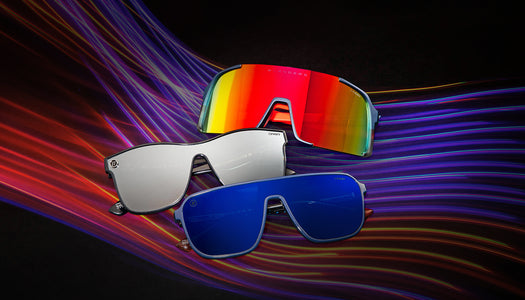Pupillary distance (PD). If you’re a prescription glasses wearer, you likely recall hearing the phrase. But what exactly does it pertain to and why do you need to have this number (or know how to measure PD yourself) in order to grab your pair of kickass Blenders Prescription eyewear?
Well, don’t sweat it. You know we’re always here for ya at Blenders HQ. Below, we’ve got the rundown on what pupillary distance is and even how to measure PD yourself!
What is Pupillary Distance?
Simply put, pupillary distance (PD) refers to the distance between the centers of your pupils. The measurement of this distance is of utmost importance because it determines precisely where you look through the lens of your glasses—if the measurement is inaccurate, your prescription eyewear won’t be correctly customized for your needs and your vision will suffer for it.
Pupillary distance is measures in millimeters. Kids normally come in between 43-58 mm, while adults rock out between 54-74 mm. Normally, your doctor includes your PD measurement on your prescription, but you can figure out that information all on your own!
Yup, that’s right. When you learn how to measure PD, you’re effectively hooking yourself up with a personalized eyewear fit… and we’ll tell ya precisely how to do so below.

How to Measure PD
- Put on your glasses and ensure you have a felt-tip marker nearby.
- Focus on an object—but make sure it's at least 20 feet away! Nothing too close.
- Put a small mark on your right lens where the object is (the mark you make should partially obscure the object from your vision).
- Repeat Step #3 on your left lens.
- Now that you've made marks on both your lenses, ensure those marks overlap into a single dot on the object you're focusing on. The two marks should not appear as two distinct dots when looking through your lenses.
- Remove your glasses.
- Use a millimeter ruler to measure the distance between the dots you made on each of your lenses. Congrats, Blend Head! You've just discovered your pupillary distance.
Cool little note: This process works for measuring with near-sighted glasses, too. Just focus on a close-up object instead of one 20 feet away (such as your laptop or phone screen) and repeat the process outlined above.
How to Measure PD (With a Buddy!)
- You know you’re popular (it’s ok to admit it!), so if you have a friend nearby willing to help, you can measure your PD with a buddy, too! It just takes a few steps:
- Gather up your materials. A pencil, piece of paper, and millimeter-marked ruler will do the job.
- Turn around and face your friend. Look straight ahead toward them.
- Have your buddy hold that ruler we talked about just to the right of your face. The zero end of the ruler should align with your pupil.
- Use the ruler to measure the distance between your right and your left pupil. To do so, simply read the millimeter number on the ruler that aligns with your left pupil. This is your pupillary distance!
- Repeat the measurement process above just to be sure.
- Ask your bud to repeat the process on your left eye, measuring the distance between your left and right pupil. This time, you will use the ruler number that aligns with your right pupil. Make a note of this pupillary distance number, too.
That’s it! You’re all set!
References
















![How to Measure PD [Pupillary Distance]](http://www.blenderseyewear.com/cdn/shop/articles/How_to_Measure_PD_770x500_crop_center.jpg?v=1639682683)


